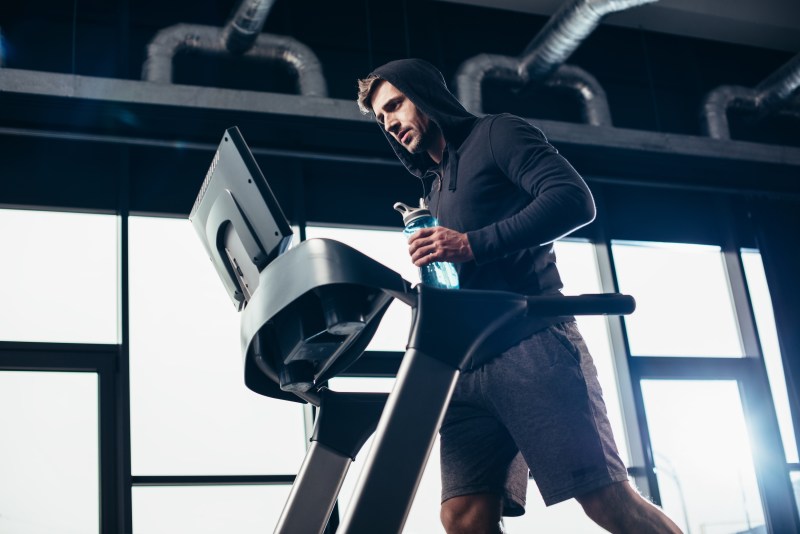
Have you ever seen someone at the gym running in a hoodie and wondered — are you crazy? Taking part in intense physical activity in a hot indoor setting while wearing heavy clothing seems challenging and uncomfortable. Yet many people working out in a hoodie do preserve to take advantage of additional workout benefits. But are these benefits real, or is it a myth? Below, we’ll break down the truth behind working out in a hoodie to help you determine if it’s worth the challenge or a hard pass.
Why you may see people working out in a hoodie

There are several reasons you may see people in the gym working out while wearing a hoodie. However, the most common motivating factor is to help produce more sweat. It is a common fitness myth that wearing more clothing during a workout can help you sweat more and burn more calories. There’s no doubt you’ll work up more of a sweat while wearing heavier clothing. But this doesn’t mean you will burn more calories. To burn more calories, you’ll need an output of additional energy (for example, a harder workout).
Does working out in a hoodie mean more weight loss?

Working out in a hoodie might result in a decrease on the scale, but this doesn’t mean more weight loss. The reason is that working out in a hoodie causes your body to sweat more, leading to a decrease in water weight. A reduction in water weight is normal, as fluctuations are always taking place.
Although you may feel motivated when you see the scale go down, it’s important to remember that losing water weight and losing fat are not the same. Not to mention, replenishing lost fluids with electrolytes is essential after a tough workout. Not rehydrating properly can impact your muscle recovery and also hinder your next workout performance.
Should you try working out in a hoodie?

If you’re looking to lose fat, working out in a hoodie is not the answer. Not only is there no research to support an increase in burned calories, but overheating in the hoodie could ultimately affect the quality of the workout. However, if you see someone exercising in a hoodie, they might be after some of the other benefits.
Some people choose to exercise in a sweatshirt as part of their warm-up process. If the gym is cold or you’re simply feeling cold, it’s certainly fine to begin your workout with a sweatshirt on. You can always ditch the hoodie as you (quickly) warm up. Another reason you may see people working out in a hoodie is to help keep their muscles and joints warm during exercise, thereby reducing the risk of injury. Exercising while wearing a hoodie can increase blood flow and could also be helpful in combatting insulin resistance.
All in all, working out in a hoodie is fine if you’re doing it for the right reasons. However, if you’re trying to lose extra weight by sweating it out more, you may ultimately be doing more harm than good for your health & fitness goals.



